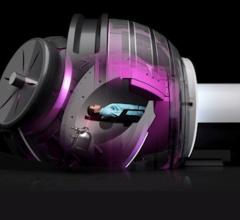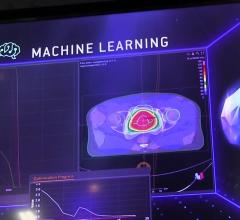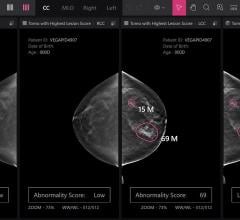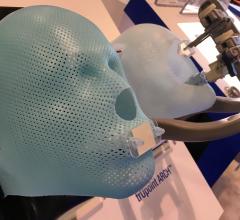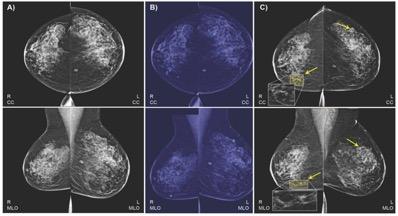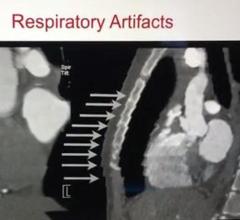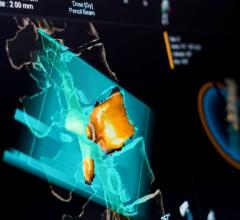Cynthia McCollough, Ph.D., director of the Mayo Clinic Computed Tomography (CT) Clinical Innovation Center, professor of ...
Lior Arazi, Ph.D., assistant professor at Ben-Gurion University, Israel, explains the potential benefits of a new Radium ...
Konica Minolta Healthcare Americas Inc. along with Shimadzu Medical Systems USA announced a collaborative agreement to co-market the Dynamic Digital Radiography (DDR) technology in the U.S. healthcare market to accelerate commercialization of the technology in the U.S.
Radiology departments have many different needs and face a wide variety of challenges that can impact their departments ...
Can you tell when someone is lying? Body language expert Traci Brown can. She explained how in a session July 21 at the ...
Stephen Sorensen, Ph.D., DABR, chief of medical physics, St. Joseph's Hospital and Medical Center, Phoenix, Arizona ...
Leigh Conroy, Ph.D., physics resident, University Health Network, Princess Margaret Cancer Center, Toronto, Canada ...
Despite decades of progress in breast imaging, one challenge continues to test even the most skilled radiologists ...
For the past twelve years, Canon Medical Systems USA, Inc. has partnered with AHRA: The Association for Medical Imaging ...
Efforts to reform healthcare are booming, but finding one that will work well is a challenge. Citing the need to control ...
A recent study projects global market revenues for radiotherapy patient positioning accessories will exceed revenues of $500 million in 2019. This represents a moderate 4.3 percent annual growth over 2018, with nearly 1/5 of the overall installed base of radiotherapy patient positioning accessories accounted for by couch tops and overlays, followed by immobilization systems.
Bayer Radiology’s Barbara Ruhland and Thom Kinst discuss how radiology departments can address the many different ...
Breast cancer is the global leading cause of cancer-related deaths in women, and the most commonly diagnosed cancer among women across the world. From our perspective, improved treatment options and earlier detection could have a positive impact on decreasing mortality, as this could offer more options for successful intervention and therapies when the disease is still in its early stages.
Ron Blankstein, M.D., director of cardiac computed tomography, Brigham and Women's Hospital, and associate professor of ...
Quynh Truong, M.D., MPH, associate professor of radiology and medicine at Weill Cornell and director of cardiac CT ...
eHealth Saskatchewan plays a vital role in providing IT services to patients, health care providers, and partners such ...
Rural America does not show up in any atlas but, geographically, it accounts for 80 percent of the United States’ land ...
Recent advances in digital radiography (DR) are increasing demand for whole spine imaging before, during and after back ...
Low doses of radiation equivalent to three computed tomography (CT) scans, which are considered safe, give cancer-capable cells a competitive advantage over normal cells in healthy tissue, scientists have discovered. Researchers at the Wellcome Sanger Institute and the University of Cambridge studied the effects of low doses of radiation in the esophagus of mice.
Macrocyclic contrast agents have the best safety profile of all the magnetic resonance (MR) contrast media that are now ...
Paragon Biosciences LLC announced the launch of its seventh portfolio company, Qlarity Imaging LLC, which was founded to harness the value of artificial intelligence (AI) to improve medical outcomes. Qlarity Imaging will further develop QuantX, the U.S. Food and Drug Administration (FDA)-cleared computer-aided breast cancer diagnosis system.
On June 30, 2019, the Centers for Medicare & Medicaid Services (CMS) announced the Johns Hopkins University School of Medicine has been designated a qualified provider-led entity (qPLE). This allows Johns Hopkins to develop criteria that meet the requirements of the federal Protecting Access to Medicare Act (PAMA) of 2014 when ordering diagnostic imaging tests such as computed tomography (CT) scans, magnetic resonance imaging (MRI) scans and nuclear imaging in the emergency department and ambulatory settings.
Approximately 30 percent of a hospital or health system’s profit comes from imaging according, to Imaging Market Trends ...
The Centers for Medicare and Medicaid Services (CMS) issued a proposal for an advanced alternative payment model (APM) for radiation oncology on July 10, 2019. In response, the American Society for Radiation Oncology (ASTRO) issued the following statement from Paul Harari, M.D., FASTRO, chair of the ASTRO Board of Directors.


 July 23, 2019
July 23, 2019 



